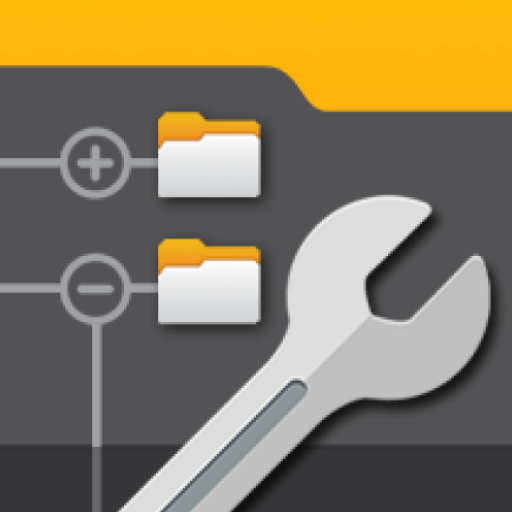For developers and tech enthusiasts, navigating the restrictions of Android’s system APIs is often a complex ordeal. Enter Shizuku, a powerful tool that simplifies this process, offering a bridge between normal apps and system APIs using ADB (Android Debug Bridge) or root privileges. Shizuku enables developers to execute tasks with elevated permissions while maintaining the flexibility of a standard application. This blog will take you on a deep dive into Shizuku, its history, how it works, and its potential applications in the present and future. Shizuku combines the power of rooted commands with the simplicity and security of ADB, allowing apps to access system APIs seamlessly. It effectively acts as a middleman between your application and Android's core system functions, streamlining interprocess communications (IPC). Whether you're developing apps, testing processes, or managing system-level actions, Shizuku is a game-changer in Android development. At its core, Shizuku facilitates direct communication with system APIs by leveraging binder technology. The tool creates a Shizuku server using ADB or root privileges, which sends binders from the system server to the app. This setup allows the app to interact with the system server as if it had native access, making operations more efficient and reliable. For example, tasks like using `PackageManager#getInstalledPackages()` for querying installed apps or enabling/disabling components via "pm" commands can be executed directly through Shizuku with elevated permissions. Developers avoid issues like slow process creation and unreliable command processing that often accompany traditional methods. For a full breakdown of Shizuku's architecture, check out the developer guide. Shizuku started as a solution for developers working around the challenges of rooted app development. Traditionally, these apps relied on the slow and error-prone method of executing commands in a root shell. Shizuku redefined this approach by introducing a streamlined IPC model, making it faster, more reliable, and accessible even with ADB permissions. Over the years, Shizuku has evolved to support a variety of Android versions and has added features like wireless ADB debugging and developer-friendly APIs. Its open-source nature (licensed under Apache 2.0) has also spurred a community-driven effort to expand its functionality, making it a must-have tool for Android developers. Starting with Shizuku is simpler than you think. There are three primary methods to get it running on your device: For rooted devices, simply launch the Shizuku app, and you're ready to go—no additional steps required. On devices running Android 10 and below without root, follow these steps: ``` adb shell sh /sdcard/Android/data/moe.shizuku.privileged.api/start.sh ``` This method requires a computer connection each time the device reboots. No USB cables? No problem! Wireless debugging allows users to pair their devices directly. Useful tip: Allow Shizuku to run in the background to prevent interruptions. For a detailed guide on these processes, visit the official Shizuku setup page. Shizuku's versatility makes it a valuable tool in numerous scenarios. Shizuku is ideal for apps that require elevated access to improve user experience. For instance: With Shizuku, managing permissions, uninstalling system apps, or automating system backups becomes easier for developers and advanced users. Developers can test app behaviors across various system configurations, enabling precise debugging. The tool’s streamlined IPC process ensures faster feedback loops during development. For beginners in Android development, Shizuku provides a practical way to learn about IPC and API integration. Its ability to replicate native API access within an app gives developers a robust playground for experimentation. Shizuku’s relevance has grown as Android has tightened restrictions on API usage and root access. It serves as a bridge, enabling developers to circumvent these limitations while adhering to Android's governance policies. This makes it invaluable for those working on: With its repository on GitHub, Shizuku invites developers worldwide to share insights, introduce enhancements, and resolve bugs collectively. Efforts like these ensure Shizuku remains at the forefront of Android development tools. Looking ahead, Shizuku is poised for greater adoption as Android’s security measures grow more stringent. Its community-driven nature guarantees continuous updates, making it compatible with future APIs and operating system changes. Additionally, advancements in machine learning and automation could see Shizuku playing a pivotal role in AI-powered device management systems. Enterprises, educators, and tech communities will likely find innovative uses for this adaptable tool. Shizuku is a testament to innovation in Android development, merging advanced functionality with ease of use. Whether you're exploring system APIs, debugging apps, or learning Android internals, Shizuku offers unparalleled convenience and efficiency. If you're ready to revolutionize your app development process or explore Android's limitless possibilities, download Shizuku and start today. Consult the user guide or visit the GitHub repository for detailed information. Unlock new horizons with Shizuku—your key to mastering Android system APIs!Exploring Shizuku: Unlocking the Full Potential of Android System APIs
Understanding Shizuku
How Shizuku Works
The History and Evolution of Shizuku
The Art of Setting Up Shizuku
1. With Root Access
2. Via ADB (Connecting to a Computer)
3. Via Wireless Debugging (Android 11+)
Applications and Benefits of Shizuku
1. Enhanced App Development
2. System-Level Management
3. Testing and Debugging
4. Educational Purposes
Shizuku in Modern Development
Open-Source Collaboration
The Future of Shizuku
Enhancing Android Development with Shizuku
Shizuku
v| Name | |
|---|---|
| Publisher | |
| Genre | Uncategorized |
| Version | |
| Update | February 15, 2025 |
| Get it On | Play Store |
| Report | Report Apps |
Preview
Exploring Shizuku: Unlocking the Full Potential of Android System APIs
For developers and tech enthusiasts, navigating the restrictions of Android’s system APIs is often a complex ordeal. Enter Shizuku, a powerful tool that simplifies this process, offering a bridge between normal apps and system APIs using ADB (Android Debug Bridge) or root privileges. Shizuku enables developers to execute tasks with elevated permissions while maintaining the flexibility of a standard application. This blog will take you on a deep dive into Shizuku, its history, how it works, and its potential applications in the present and future.
Understanding Shizuku
Shizuku combines the power of rooted commands with the simplicity and security of ADB, allowing apps to access system APIs seamlessly. It effectively acts as a middleman between your application and Android’s core system functions, streamlining interprocess communications (IPC). Whether you’re developing apps, testing processes, or managing system-level actions, Shizuku is a game-changer in Android development.
How Shizuku Works
At its core, Shizuku facilitates direct communication with system APIs by leveraging binder technology. The tool creates a Shizuku server using ADB or root privileges, which sends binders from the system server to the app. This setup allows the app to interact with the system server as if it had native access, making operations more efficient and reliable.
For example, tasks like using `PackageManager#getInstalledPackages()` for querying installed apps or enabling/disabling components via “pm” commands can be executed directly through Shizuku with elevated permissions. Developers avoid issues like slow process creation and unreliable command processing that often accompany traditional methods.
For a full breakdown of Shizuku’s architecture, check out the developer guide.
The History and Evolution of Shizuku
Shizuku started as a solution for developers working around the challenges of rooted app development. Traditionally, these apps relied on the slow and error-prone method of executing commands in a root shell. Shizuku redefined this approach by introducing a streamlined IPC model, making it faster, more reliable, and accessible even with ADB permissions.
Over the years, Shizuku has evolved to support a variety of Android versions and has added features like wireless ADB debugging and developer-friendly APIs. Its open-source nature (licensed under Apache 2.0) has also spurred a community-driven effort to expand its functionality, making it a must-have tool for Android developers.
The Art of Setting Up Shizuku
Starting with Shizuku is simpler than you think. There are three primary methods to get it running on your device:
1. With Root Access
For rooted devices, simply launch the Shizuku app, and you’re ready to go—no additional steps required.
2. Via ADB (Connecting to a Computer)
On devices running Android 10 and below without root, follow these steps:
- Enable USB Debugging in Developer Options.
- Use ADB on your computer to initiate Shizuku with this command:
“`
adb shell sh /sdcard/Android/data/moe.shizuku.privileged.api/start.sh
“`
This method requires a computer connection each time the device reboots.
3. Via Wireless Debugging (Android 11+)
No USB cables? No problem! Wireless debugging allows users to pair their devices directly.
- Enable Developer Options on your device.
- Turn on Wireless Debugging and pair the device using Shizuku’s built-in setup process.
Useful tip: Allow Shizuku to run in the background to prevent interruptions.
For a detailed guide on these processes, visit the official Shizuku setup page.
Applications and Benefits of Shizuku
Shizuku’s versatility makes it a valuable tool in numerous scenarios.
1. Enhanced App Development
Shizuku is ideal for apps that require elevated access to improve user experience. For instance:
- Device managers can list installed apps and manage system settings without rooting the device.
- Customization tools can modify system UI elements with enhanced API permissions.
2. System-Level Management
With Shizuku, managing permissions, uninstalling system apps, or automating system backups becomes easier for developers and advanced users.
3. Testing and Debugging
Developers can test app behaviors across various system configurations, enabling precise debugging. The tool’s streamlined IPC process ensures faster feedback loops during development.
4. Educational Purposes
For beginners in Android development, Shizuku provides a practical way to learn about IPC and API integration. Its ability to replicate native API access within an app gives developers a robust playground for experimentation.
Shizuku in Modern Development
Shizuku’s relevance has grown as Android has tightened restrictions on API usage and root access. It serves as a bridge, enabling developers to circumvent these limitations while adhering to Android’s governance policies. This makes it invaluable for those working on:
- System tools requiring access to restricted APIs.
- Apps targeting enthusiasts who want advanced control without rooting.
Open-Source Collaboration
With its repository on GitHub, Shizuku invites developers worldwide to share insights, introduce enhancements, and resolve bugs collectively. Efforts like these ensure Shizuku remains at the forefront of Android development tools.
The Future of Shizuku
Looking ahead, Shizuku is poised for greater adoption as Android’s security measures grow more stringent. Its community-driven nature guarantees continuous updates, making it compatible with future APIs and operating system changes.
Additionally, advancements in machine learning and automation could see Shizuku playing a pivotal role in AI-powered device management systems. Enterprises, educators, and tech communities will likely find innovative uses for this adaptable tool.
Enhancing Android Development with Shizuku
Shizuku is a testament to innovation in Android development, merging advanced functionality with ease of use. Whether you’re exploring system APIs, debugging apps, or learning Android internals, Shizuku offers unparalleled convenience and efficiency.
If you’re ready to revolutionize your app development process or explore Android’s limitless possibilities, download Shizuku and start today. Consult the user guide or visit the GitHub repository for detailed information.
Unlock new horizons with Shizuku—your key to mastering Android system APIs!
Download Shizuku
You are now ready to download for free. Here are some notes:
- Please check our installation guide.
- To check the CPU and GPU of Android device, please use CPU-Z app





